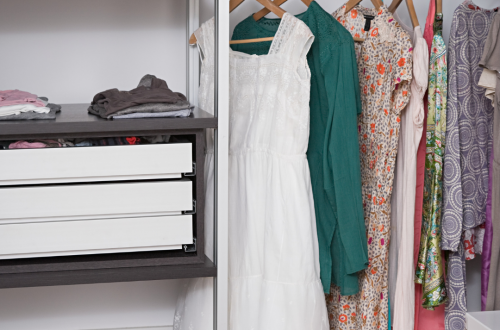
How To Color Coordinate Successfully?
Have you heard of color coordination? It’s the art of using colors in your home to create a clean, organized, and aesthetically pleasing look. Use color themes to visually direct readers through your content. Color coordination is a technique used by interior designers to make rooms visually pleasing by matching and contrasting colors. It’s the same practice followed by web designers and web developers as well.
Setting a color theme can be a fun way to add a little flair to your home decor, and it’s ideal for spring. You can mix and match with what you feel works for you, plus add your own style in, for example, you can get your photo canvas prints over at canvasdesign.co.uk for a personalized art addition to your space, or create something that matches your present color scheme. It’s essential to remember that color coordinating can be a challenging hobby to master, especially when your artistic ability is limited. Luckily, there are easy tips and tricks that you can use to color coordinate like a pro.
Understanding the Color Wheel.
The Color Wheel is a great way to see how different colors are related. The Color Wheel is an interactive tool to quickly and easily visualize how color mixing and shades can create new colors.
Color coordination can be a difficult concept to grasp, but a good understanding of the color wheel is essential. With a little research and some basic theme-defining strategies, you can master the art of color coordination.
A color wheel, also known as a color circle or color wheel, is a diagram that helps artists, designers, and photographers to mix colors by using primary, secondary, and tertiary colors. The most basic color wheel consists of only three colors: red, yellow, and blue. However, more advanced color wheels may include up to 16 complementary colors.
Color is all around us, and it is important to understand how different colors work together to create ambiance and effect. The color wheel is a visual aid used to learn about color. The circle is divided into 12 sections or segments. Each segment is made up of three primary colors: yellow, red, and blue. The sections are called tints, tones, and shades, and the arrangement of these colors creates endless color combinations. Colors that share the same hue (primary color) are considered analogous colors. The opposite color is called complementary. The two colors can make each other appear brighter or more powerful when placed in proximity.
Look Across the Wheel to Find Complementary Colors.
When color coordination is challenging, try looking across the wheel to find complementary colors. Red, yellow, and blue are complementary colors. They create light-saturated, bold, and dynamic color combinations when paired together.
Complementary colors fall on either end of the color wheel. Complementary colors work well together to create a harmonious design. While they are often thought of as creating the most dynamic designs, complementary colors, blended neutrals, and monochromatic designs can also create exceptional results.
Creating complementary colors can produce a fresh, new look that brightens a room. These types of colors are placed opposite on the color wheel, and their placement next to each other creates a contrast that is thought to energize a space. To achieve a successful complementary color palette, use warm and cool tones, and avoid using too many colors together.
You can use these color schemes in your home through interior features such as wall paints, floorings, furniture pieces, wall decorations, and lighting fixtures. You can design an accent wall with the dark wall color such as Isle of Pines or Moscow Midnight, hang a few art pieces, and maybe even consider putting on a neon sign in a unique theme like Japanese characters or animal design (check out Neon Mama for more ideas). Further, look for complementary colors for other walls in the room and for furniture. You could go for lighter blues and greens to make the room look brighter, welcoming, and spacious.
Check For Analogous Colors Right Next To Each Other.
As it applies to interior design, color coordination is the art of matching colors, tones, and shades to create a seamless, aesthetically pleasing look. To successfully coordinate colors, look to find analogous colors right next to each other in the same color family, including oranges, blues, greens, and pinks. Using these three colors and other colors in the analogous family, your color palette will be cohesive and harmonious. In addition, if you have trouble finding the right color palette for the interior design of your home, you can always enlist the help of a company that does home remodeling wilmington. They can also help you to choose colors that are complementary to the other elements in your home, such as furniture and artwork.
Color coordinating is effectively matching certain colors together. Matching analogous colors creates a strong, cohesive palette that is easily recognizable.
When you are decorating a space, especially one that has a lot of furniture pieces like chairs (like the ones at office monster), tables, and shelves, consider what colors can complement all the items. You can, for instance, opt for analogous colors which can create a pleasing and balanced color composition.
Anyway, keep in mind that color harmony is all about putting colors next to each other, so one color complements or balances the other. Analogous colors are defined by their hue and degree of lightness whereas complementary colors are highly contrasting and vibrant in tone.





